Continually improving customer service performance is vital as it’s one of the definitive drivers of company profitability. In fact, it’s not unrealistic to expect sales increases of 20% or more of total company revenue by delivering excellence in customer service.
Fortunately, there is an abundance of tactics you can try to improve your team’s performance. From implementing a quality assurance strategy to asking for honest feedback from your customers, these will help provide a seamless customer journey from prospect to post-sale.
Having the tools to show your team their performance and impact on the customer experience can help them improve their performance. The right tools will help you take corrective action before it is too late. Genuine, continuous conversations with your team will help them improve their performance and increase your customer retention rate.
In this article, you’ll learn 15 strategies to improve customer service performance in 2022, so let’s dive in.
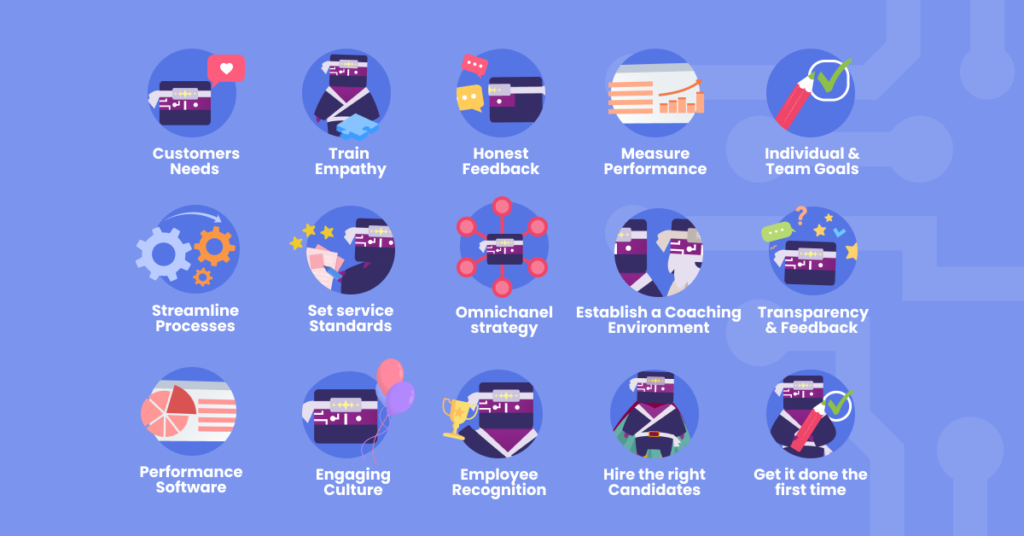
15 surefire ways to improve your team’s customer service performance
Your customer service team is the front line of your company. They will be the ‘face’ of what customers see as representing your brand. Agents will provide the impression each of your customers has about your company, so it’s important to make sure the quality of service is up to company standards. There are a number of actionable ways to improve customer service performance in your team.
Let’s take a look at the strategies for providing excellent customer service here:
1. Understand customers needs
When asking yourself how to provide good customer service, this tip is first for a reason: it’s the most important. Everything your customer service team does should be based on the customer’s needs. Understanding exactly what those needs are will help guide your customer service strategy.
The best way to learn your customers’ needs is to ask them. Use a survey, an email, a phone call, or whatever resources you have available to ask them about their needs specific to your industry.
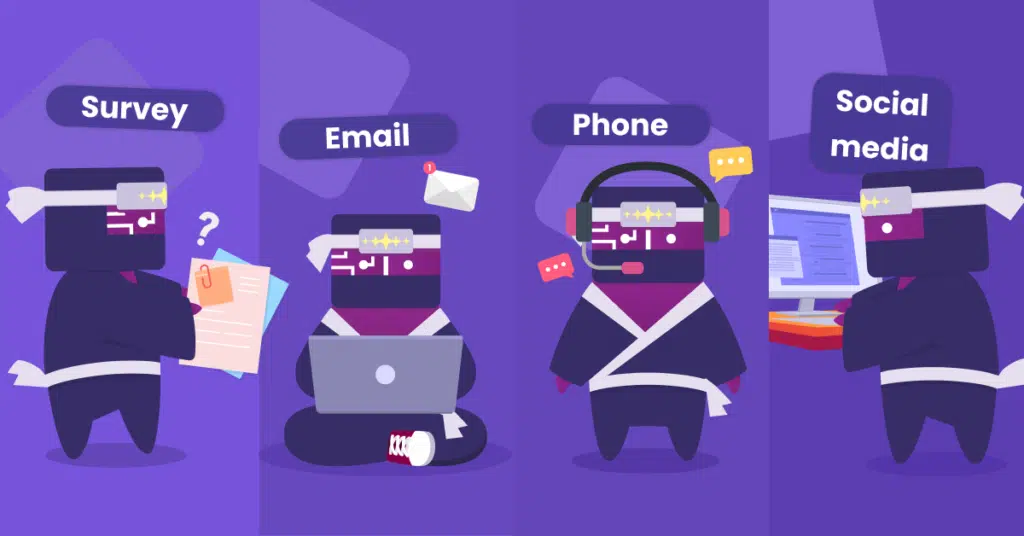
2. Train empathy
Understanding your customer’s specific need is just the first step. What, and often more importantly, how you interact with them is vital to ensure the success of your customer service performance strategy.
Often, when companies look at improving their performance management systems they are driven by the business’ bottom line, yet customer support teams should understand that how a customer feels after their interaction with you, will increase customer loyalty.
Including empathy in your performance coaching initiatives will help you focus on increasing customer satisfaction – which will, in turn, affect your bottom line.
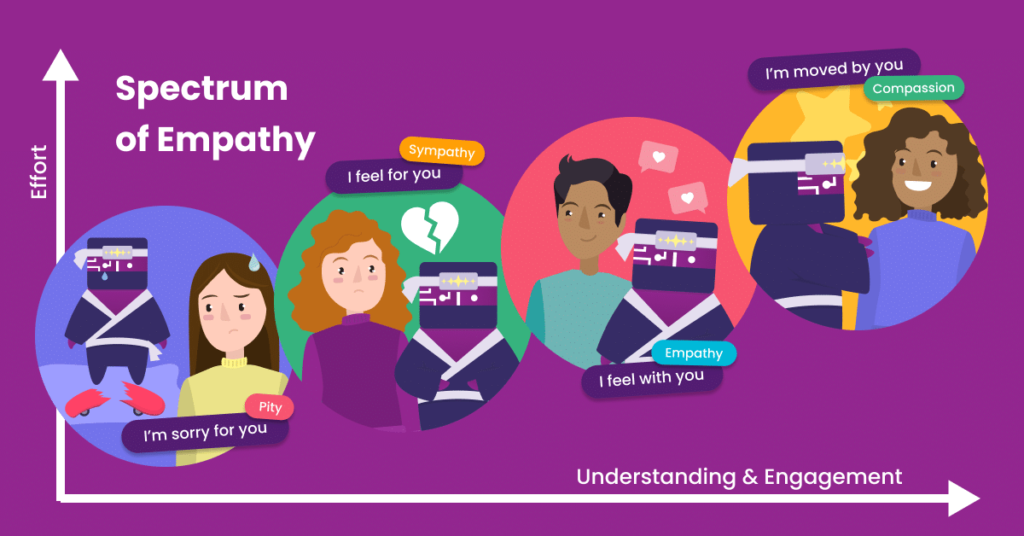
3. Encourage honest customer feedback
Having a culture of honesty and integrity means more than just putting it on a poster around the office. It means promoting it in each meeting, email, and call that you and your team have with each other and the customer.
Listening to your customer’s feedback makes them not only feel valued, but also leaves them feeling positive about your brand. Good customer feedback generates positive reviews. Bad customer feedback generates opportunities for improvement.
Even difficult conversations with customers will be easier and more productive if the customer feels more comfortable. Encourage your agents to uphold this culture and you’ll receive the real feedback that will help you and your team learn and improve performance.
4. Set up a framework to measure your team’s performance
Having customer service performance metrics to work toward is the perfect way to set your team up for success. The only way to determine the right key performance indicators (KPIs) is to create a solid framework to guide you.
Depending on the core competencies of your teams, you could decide to track:
- Customer Satisfaction Scores (CSAT),
- Negative Response Rate (NRR),
- Reopen Rate
- First Contact Resolution (FCR)
- Average Resolution Time (ART)
- Employee engagement
Work with your team to determine which KPIs you’ll track, and use these numbers to provide direction on which activities to focus on.
5. Set individual and team goals
Once you have your framework, you can determine what both your team and each individual need to accomplish. Allow your agents to determine and track their individual goals based on what the team agreed on together.
Having your agents set their own goals empowers them to take true ownership and achieve them. This feeling of accomplishment translates into more engagement and higher productivity. Your team’s customer service performance goals then align with the company’s goals naturally.
But, this doesn’t necessarily mean that they will reach the goals you’ve agreed. Tracking their performance (and having a culture of honesty and integrity), can help you to support your team when any issues arise, so you can overcome them together.
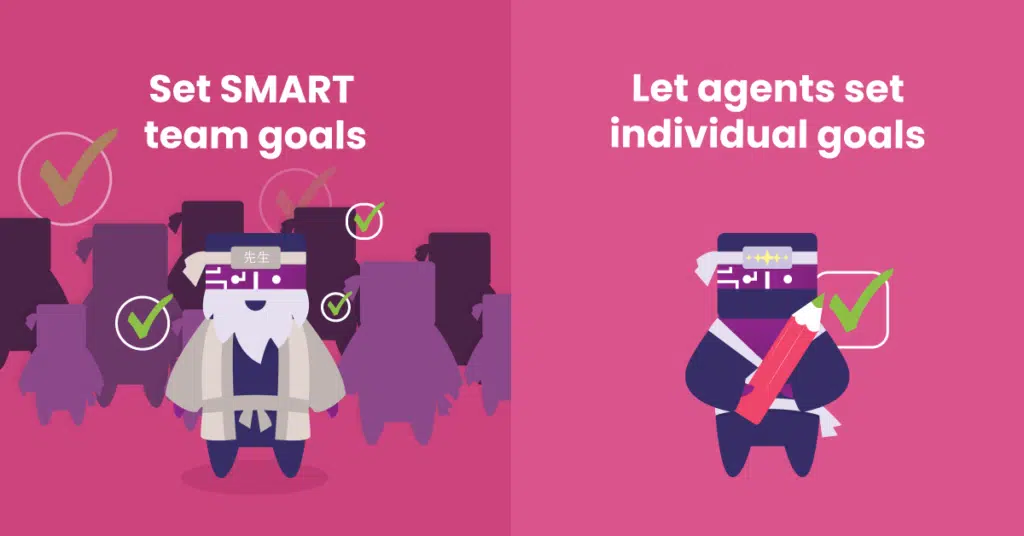
6. Streamline manual processes
In many cases, optimizing processes can save you and your team time and reduce errors. One option is to use software built to reduce tedious tasks, calculate trends, or automate your reports.
With the extra time you’ll gain, you can focus on more important things like training your team, evaluating data, or solving customer problems. Cutting out these manual processes can also encourage agents to embrace technology that increases their productivity.
7. Set and communicate service standards
Simply setting goals isn’t enough to accomplish them. Create a customer service quality assurance framework and make sure your team is aware of your expectations. Provide agents with a quality assurance checklist to detail what’s most important when helping customers.
However you choose to give quality feedback to your team, ensure it’s consistent, on a regular basis, and clear. This kind of transparency (see number ten below) will do wonders for your team’s overall success and motivation.
8. Establish a coaching environment
Providing your customer service teams with quality feedback is only half the battle. Sure, you can measure their performance — how long did it take to answer a call or resolve an issue. But when issues crop up, having the ability to flag them, and immediately feed back on any issue can help your teams improve their customer service. Often, the ‘why’ and the ‘how’ of your feedback is what makes it useful.
Giving your teams advice on how to improve, rather than just telling them that they are not reaching their goals, helps to motivate change. It provides clarity.
Coaching is also vital to stop those issues from occurring in the first place. Continuously coaching, advising, mentoring your customer support agents, and giving them the tools to anticipate your customer’s needs, quite simply enhances your customers’ experience.
9. Use an omnichannel customer service strategy
Creating a sense of accessibility in today’s digital world is important, but it’s also crucial to make sure you don’t overstretch your resources to be everywhere. You can consider options like email, Facebook, WhatsApp, and Twitter to make the customer’s experience easier and faster. The first step to creating this accessibility is to find out where your customers prefer to seek out help and focus your efforts on those channels.
You can also create a place for customer self-service (CSS) to reduce your teams’ customer contact rate. For example, an FAQ page, a help center, or a community forum can help customers resolve issues without having to contact your CS team.
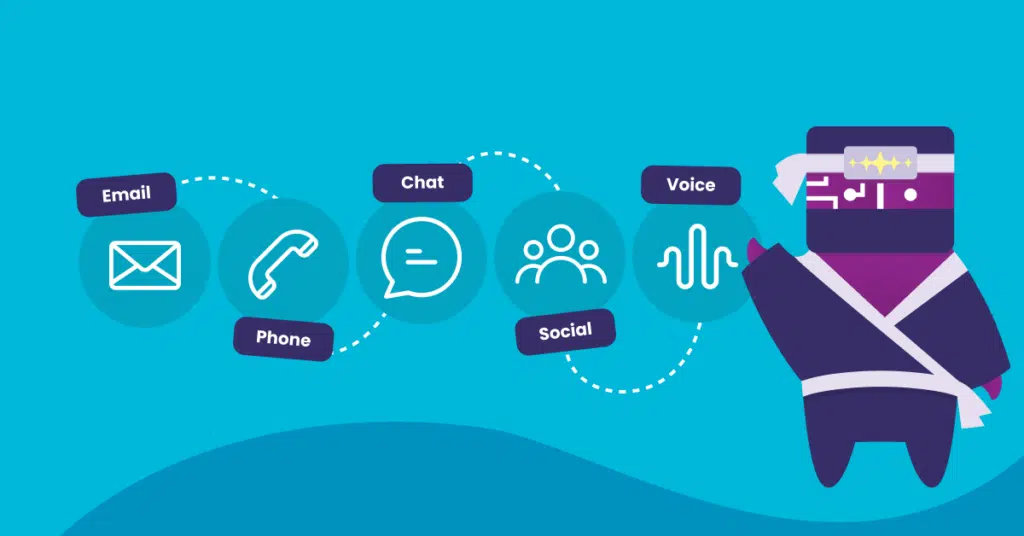
10. Be transparent and provide feedback
Transparency amongst your team combined with providing regular, quality feedback will solidify the communication you have with each other. Allowing each team member to see their numbers in real-time will not only motivate them but provide a sense of ownership.
Open communication also results in more efficient 1:1 meetings as agents are no longer blind to their performance. This insight allows them to be more productive, make faster tweaks to their performance, and be prepared for conversations about their results.
11. Use customer service performance management software
Technology can be intimidating for some. What’s most important with customer service performance management software is to ensure it’s effective as well as user-friendly. Choosing software can seem daunting at first, but once your team is up and running it will be a massive time-saver.
Of course, connecting it with Kaizo’s Platform will ensure you’re set up for success. You’ll be able to create gamified tasks, monitor performance, provide corrective direction, and improve quality assurance with ease.
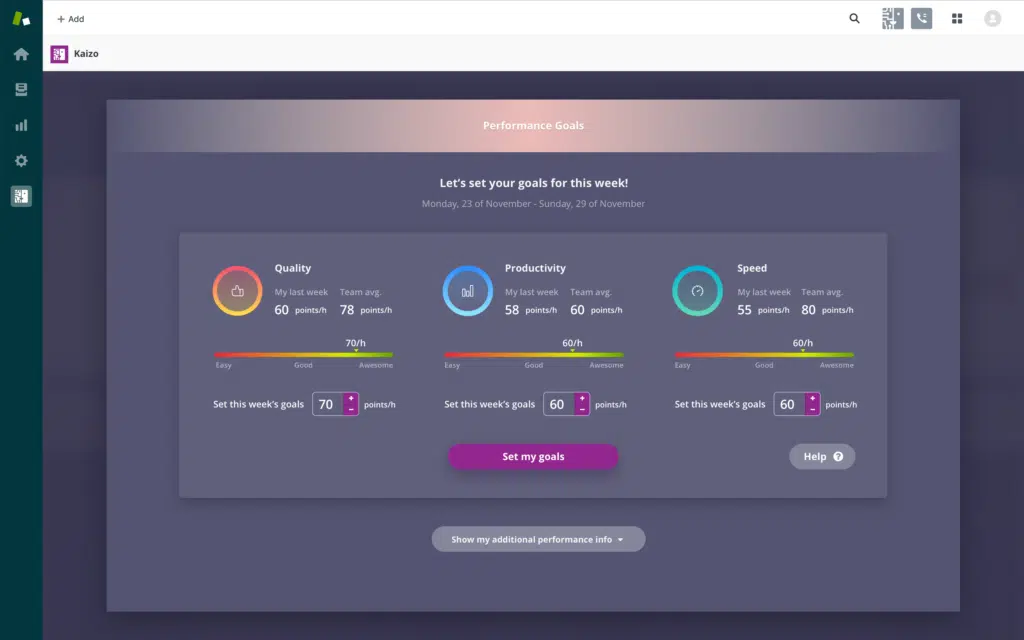
12. Create an engaging company culture
Creating an environment where your team members feel engaged can help boost employee happiness and reduce agent turnover. One way to do this is to gamify your training and performance management.
By using gamification, providing productive feedback, and maintaining great relationships and communication with your team, you can ensure your employees are engaged. This type of company culture leads to improved team spirit which translates to better performance and more satisfied customers.
13. Set up an employee recognition and rewards program
Maslow’s hierarchy of needs states that our fourth need after food, safety, and love is esteem. This includes feelings of recognition, attention, confidence, and the ability to achieve.
Create an employee rewards program to help your employees feel appreciated. Anything from a $5 gift card to announcing someone as the employee of the month can boost confidence in themselves and the company. Don’t underestimate non-material and non-monetary recognition either. For some, it could mean the difference between the bare minimum and a stellar results month.
14. Hire the ‘right’ candidates
When thinking about how to improve customer service skills in your team, the starting point is to hire people best suited for the job. One way to do this is to look for personalities and aspirations in interviews in addition to skills because motivated people can learn what’s needed.
It can be difficult to identify the best candidates, but evaluating their empathy and problem-solving skills is essential in finding great customer service agents. The key? Look for people who live to help other people.
15. Get it done the first time
One of the best ways to achieve increased performance is to solve all the customer’s problems the first time. Calculating and tracking your First Contact Resolution score (FCR) will help you understand the importance of spending extra time upfront to provide a quality reply the first time.
Oftentimes leaders spend more time focusing on the speed of resolution than actually solving the problem. This ultimately leads to a much higher reopen rate, thus negating all of your efforts.
Further reading: 12 essential customer service metrics & KPIs + how to apply them
Get started with improving your team’s customer service performance
There is no single answer to the question, ‘ what is the key to great customer service?’, but combining these strategies will empower your team to work together and help each other which can drastically improve your bottom line. Creating a strategy, setting customer service goals, and involving your team in the process helps encourage the teamwork necessary to succeed. Make it part of your culture and lead by example to motivate agents.
No matter the process you choose, the KPIs you measure, or how you motivate your team, your company expects the best. You can come prepared with Kaizo’s solutions to save the day and make sure your team is aligned all at once.



